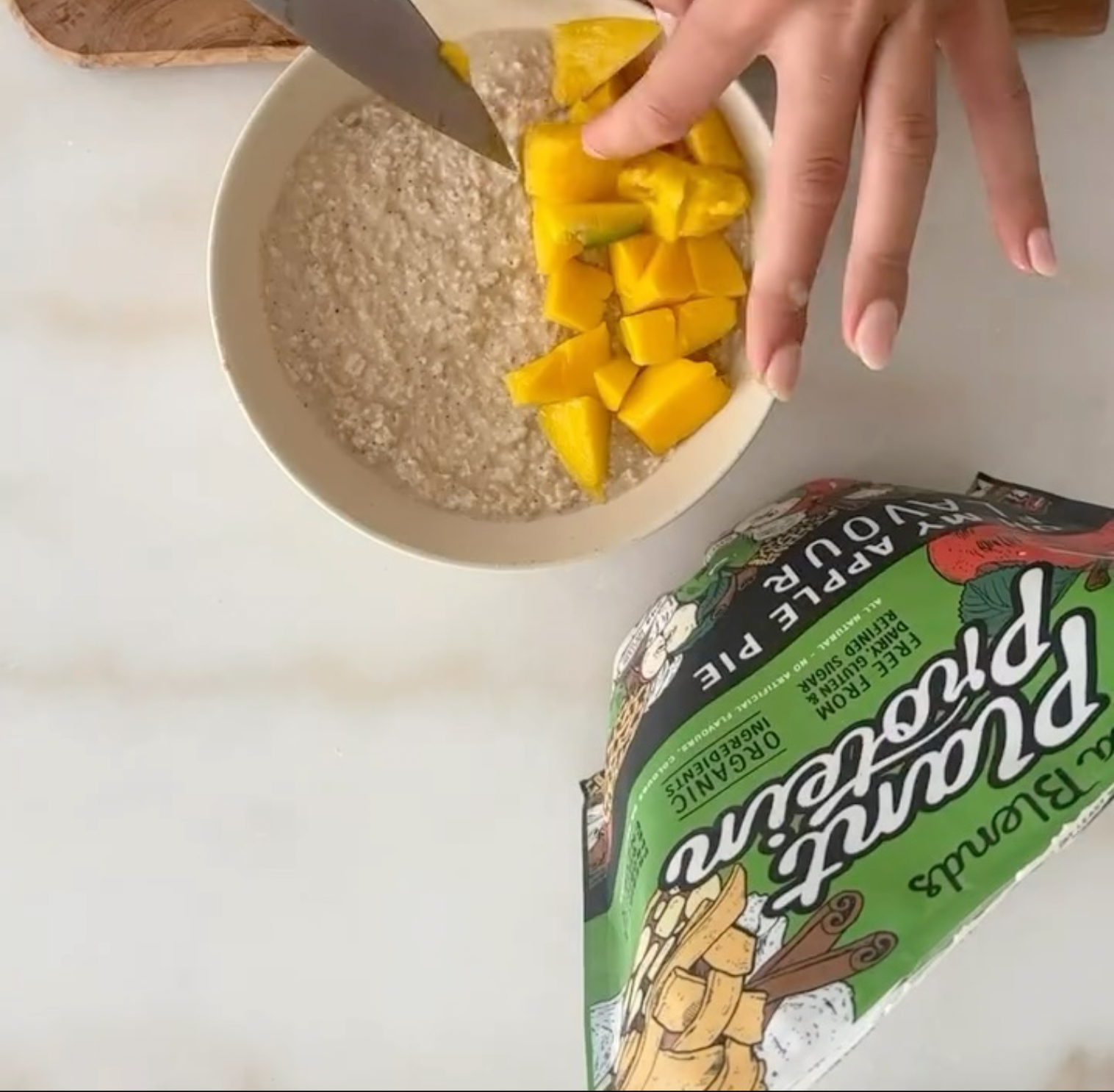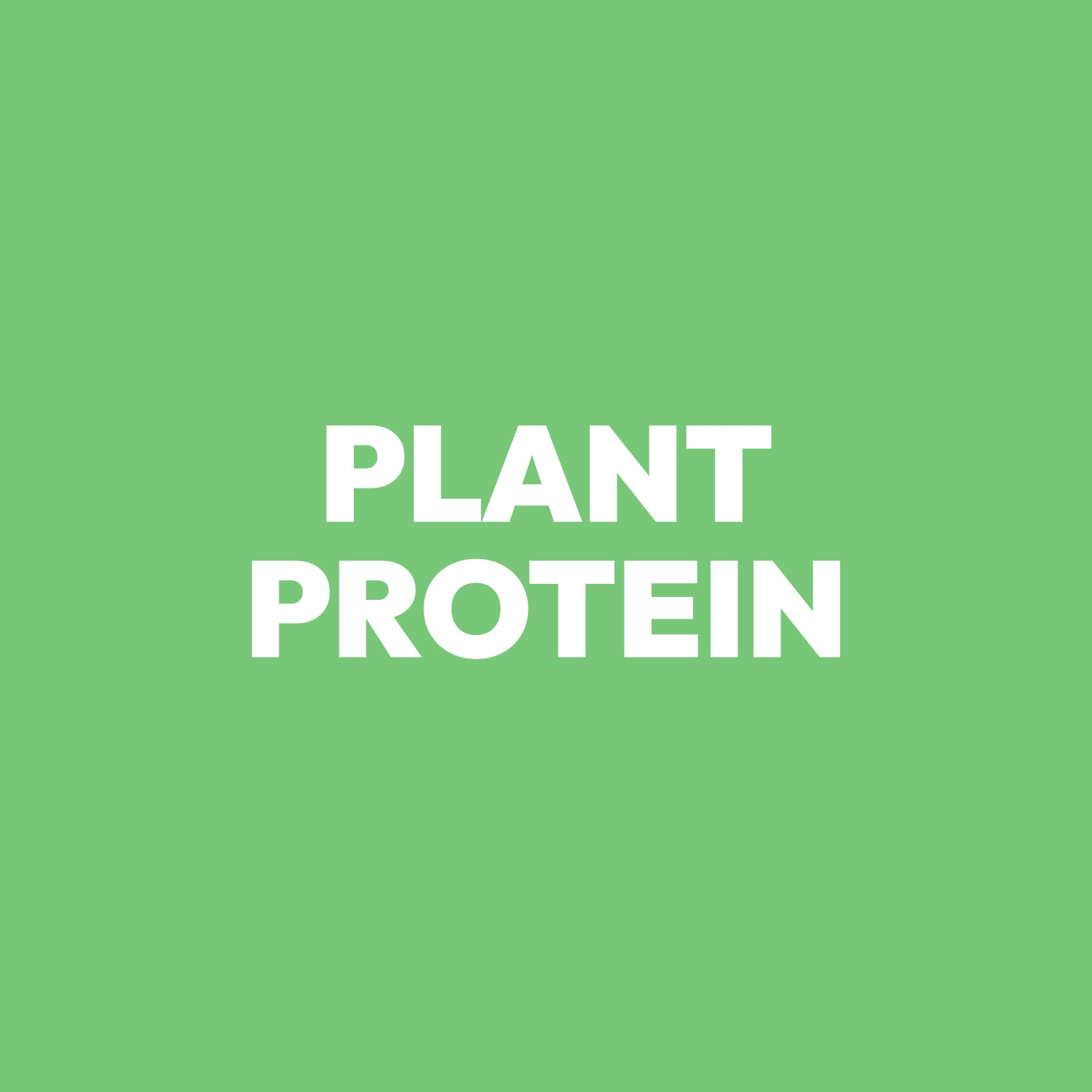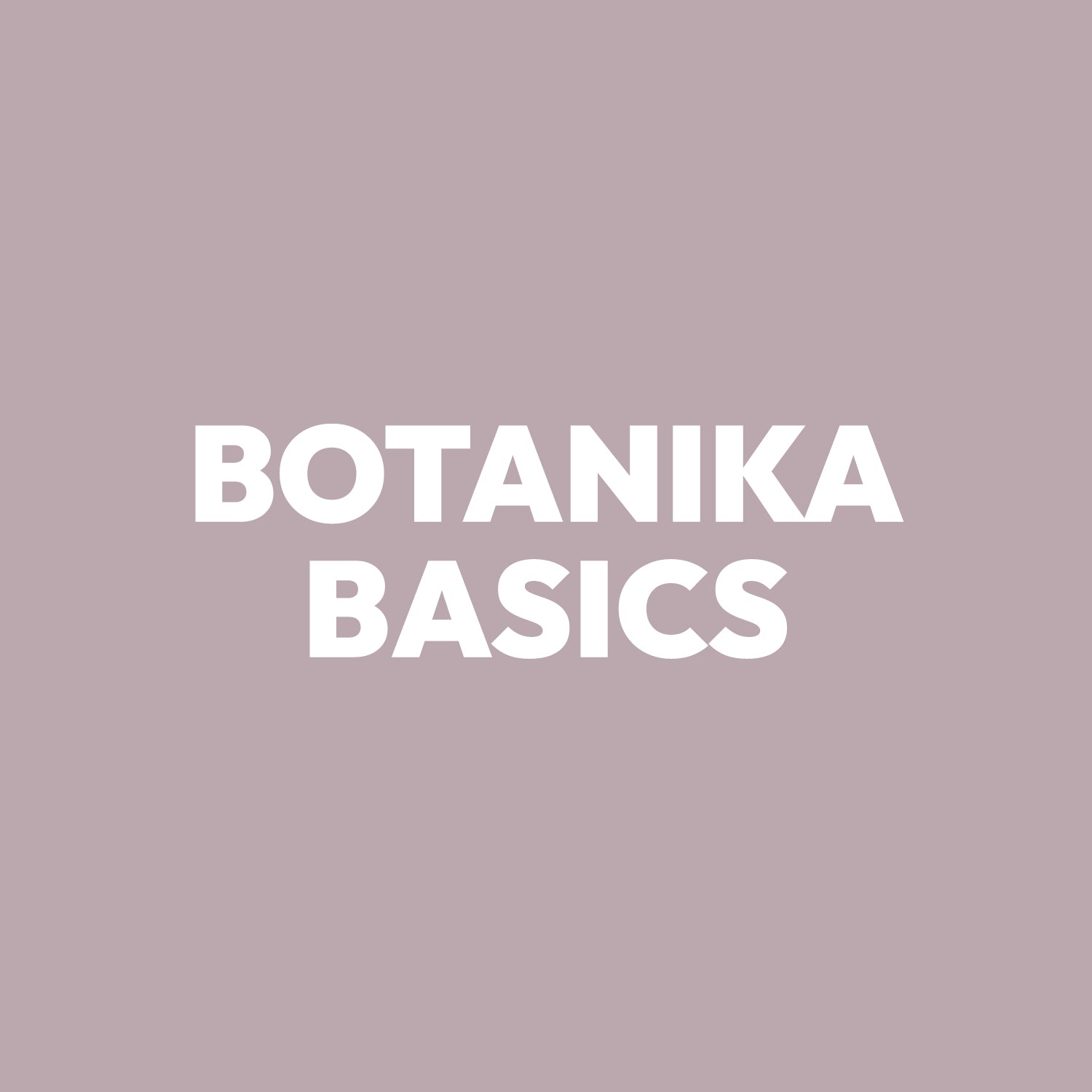

How to Get Protein as a Vegetarian?
One of the most common questions new vegetarians face is whether they can get enough protein without eating meat. The good news? A well planned vegetarian diet can easily meet all your dietary protein intake requirements. In fact, most vegetarians and vegans in developed countries consume more than adequate amounts of protein daily.

👉 Discover our plant protein powders
This comprehensive guide will show you exactly how to get protein as a vegetarian, covering everything from the highest-protein vegetarian foods to daily meal planning strategies. Whether you’re new to vegetarian diets or looking to optimise your protein intake, you’ll discover practical, science-backed approaches to meeting your nutritional needs without animal foods.
Top Vegetarian Protein Sources
The foundation of adequate protein intake on a vegetarian diet starts with knowing which plant foods and vegetarian-friendly animal products pack the biggest protein punch. Here are the highest-protein options available to vegetarians:
Highest Protein Vegetarian Foods:
-
Greek yogurt: 15-20 grams per cup
-
Lentils: 18 grams per cup cooked
-
Tofu (firm): 10 grams per 100g serving
-
Eggs: 6 grams per large egg
-
Cottage cheese: 14 grams per half cup
-
Tempeh: 19 grams per 100g serving
The key insight for vegetarians is that protein deficiency is extremely rare in developed countries when following a varied diet that includes these protein rich foods. Your body doesn’t distinguish between plant protein and animal protein - it simply needs all the essential amino acids, which vegetarian diets can absolutely provide.

👉 Discover our plant protein powders
When you combine different protein sources throughout the day, you naturally create complete amino acid profiles. This means you don’t need to stress about perfect protein combining at every meal - variety across your daily food intake is what matters most for human health.
Research consistently shows that vegetarians typically consume 70-80 grams of protein daily, well above the recommended amounts. This demonstrates that concerns about protein deficiency on vegetarian and vegan diets are largely unfounded when following a balanced diet with adequate calories.
Daily Protein Requirements for Vegetarians
Understanding how much protein you actually need is crucial for planning a successful vegetarian diet. The specific targets vary based on your age, gender, activity level, and life stage.
Standard Daily Protein Targets:
-
Women: 46 grams per day
-
Men: 55-56 grams per day
-
Athletes: 1.2-1.7 grams per kilogram of body weight
-
Older adults (65+): 1.0-1.2 grams per kilogram of body weight
Vegetarians may need slightly more protein than those who eat meat due to the digestibility differences between plant and animal proteins. However, this difference is minimal - typically just 10-15% more - and is easily achieved by eating a varied diet with multiple protein sources.
Protein Needs by Life Stage:
-
Children (4-8 years): 13-19 grams daily
-
Teens (9-18 years): 34-52 grams daily
-
Pregnant women: 71 grams daily (additional 25g above baseline)
-
Breastfeeding women: 75-80 grams daily
To calculate your personal protein needs, multiply your body weight in kilograms by 0.8 for basic needs, or by 1.2-1.7 if you’re highly active. For example, a 70kg active adult would need approximately 84-119 grams of protein daily.

👉 Discover our plant protein powders
The beauty of vegetarian protein sources is that they often come packaged with additional essential nutrients like fiber, vitamins, and minerals that support overall health benefits. Unlike many animal proteins, plant protein sources are naturally free of saturated fat and cholesterol.
Complete Guide to Vegetarian Protein Foods
Legumes and Beans
Legumes form the backbone of protein intake in many traditional vegetarian cultures worldwide. These plant protein sources are not only affordable but also provide impressive amounts of protein along with fiber and other nutrients.
Protein Content of Popular Legumes:
-
Lentils: 18 grams per cup cooked
-
Chickpeas: 15 grams per cup cooked
-
Black beans: 15 grams per cup cooked
-
Red kidney beans: 13 grams per cup cooked
-
Green peas: 8 grams per cup cooked
-
Baked beans: 12 grams per cup
The convenience factor of legumes makes them ideal for busy lifestyles. Dried legumes require soaking and longer cooking times but offer better flavour and texture. Canned varieties provide quick convenience - just rinse to reduce sodium content before using.
Easy Meal Ideas with Legumes:
-
Three-bean chili with brown rice
-
Lentil curry with whole grain naan
-
Hummus made from chickpeas served with vegetables
-
Black bean and quinoa Buddha bowls
-
Split pea soup with whole grain bread
Budget-conscious vegetarians particularly benefit from legumes, as they’re among the most cost-effective protein sources available. A single cup of cooked lentils costs less than $0.50 but provides as much protein as expensive meat alternatives.
Soy Products
Soy stands out among plant foods because it provides a complete amino acid profile, making soy protein comparable to animal proteins in quality. This makes soy-based foods particularly valuable for vegetarians and vegans.
Complete Protein Profile of Soy Foods:
-
Firm tofu: 10 grams per 100g serving
-
Tempeh: 19 grams per 100g serving
-
Edamame: 17 grams per cup cooked
-
Soy milk: 7 grams per cup
-
Textured vegetable protein (TVP): 12 grams per quarter cup dry
Different types of tofu serve various culinary purposes. Silken tofu works excellently in smoothies and desserts, firm tofu handles stir-fries well, and extra-firm tofu can be grilled or baked. Tempeh, a fermented soy product, offers probiotics along with protein and has a nutty flavour that many prefer over tofu.

👉 Discover our plant protein powders
Common soy myths often discourage people from including these valuable protein sources in their diet. However, research consistently shows that moderate soy consumption (1-2 servings daily) is safe and may offer health benefits including reduced risk of heart disease and certain cancers.
Other soy products like miso paste add flavor to soups and marinades while contributing protein. Soya milk serves as an excellent dairy milk alternative, and soya beans can be enjoyed fresh as edamame or dried in various preparations.
Dairy and Eggs
For lacto ovo vegetarian diets, dairy foods and eggs provide some of the highest-quality protein sources available. These animal products offer complete amino acid profiles and high digestibility.
High-Protein Dairy Options:
-
Greek yogurt: 15-20 grams per cup
-
Cottage cheese: 14 grams per half cup
-
Milk (dairy milk): 8 grams per cup
-
Cheddar cheese: 7 grams per ounce
-
Almond milk (fortified): 1 gram per cup
Eggs deserve special mention as a protein powerhouse. Each large egg contains 6 grams of high-quality protein, while egg whites provide 3.6 grams each. Eggs can be prepared in countless ways - scrambled, boiled, poached, or incorporated into baked goods and meals.
For those concerned about saturated fat, choose lower-fat dairy options like skim milk, low-fat yogurt, and reduced-fat cheeses. These maintain the protein content while supporting heart health.
Dairy alternatives like almond milk, while lower in protein than dairy milk, can be part of a varied diet. Fortified foods in this category often include added vitamin D and other essential nutrients that support overall nutrition.
Nuts and Seeds
While nuts and seeds are calorie-dense, they provide valuable protein along with healthy fatty acids and essential nutrients. The key is understanding appropriate portion sizes to maximise nutritional benefits.

👉 Discover our plant protein powders
Protein Content of Popular Nuts:
-
Almonds: 6 grams per ounce (about 23 nuts)
-
Peanuts: 7 grams per ounce
-
Walnuts: 4 grams per ounce
-
Cashews: 5 grams per ounce
High-Protein Seeds:
-
Hemp seeds: 10 grams per 3 tablespoons
-
Chia seeds: 5 grams per 2 tablespoons
-
Pumpkin seeds: 9 grams per ounce
-
Sunflower seeds: 6 grams per ounce
Nut butter and seed butters offer convenient ways to add protein to meals and snacks. Two tablespoons of peanut butter provide 7 grams of protein and can be spread on whole grain bread, added to smoothies, or used in cooking.
Due to their high calorie content, nuts and seeds work best as part of measured portions rather than unlimited snacking. A small handful (1 ounce) provides substantial protein while keeping calories in check.
Grains and Cereals
While grains aren’t typically considered primary protein sources, certain varieties contribute meaningful amounts to your daily protein intake. Some grains even provide complete amino acid profiles.
Complete Protein Grains:
-
Quinoa: 8 grams per cup cooked
-
Amaranth: 9 grams per cup cooked
-
Buckwheat: 6 grams per cup cooked
Traditional Grains with Moderate Protein:
-
Oats: 6 grams per cup cooked
-
Brown rice: 5 grams per cup cooked
-
Whole wheat bread: 4 grams per slice
-
Whole wheat pasta: 7.5 grams per cup cooked
Many commercial cereals and grain products are now protein-enriched, offering 10-15 grams per serving. These can be particularly helpful for athletes or individuals with higher protein needs.
Using grains as a protein base for meals works especially well when combined with legumes. The classic combination of brown rice and beans creates a complete amino acid profile while providing substantial protein - this principle underlies many traditional vegetarian cuisines worldwide.
Meeting Your Daily Protein Goals
Translating protein knowledge into practical daily eating requires strategic meal planning. Here are sample meal plans showing how easily vegetarians can reach various protein targets:
Sample 50g Protein Day:
-
Breakfast: Oatmeal (6g) with almond milk (1g) and chia seeds (5g) = 12g
-
Lunch: Lentil soup (18g) with whole grain roll (3g) = 21g
-
Snack: Greek yogurt (15g) = 15g
-
Dinner: Stir-fried tofu (10g) with brown rice (5g) = 15g
-
Daily Total: 63g protein
Sample 70g Protein Day:
-
Breakfast: Two eggs (12g) with whole grain toast (4g) = 16g
-
Lunch: Chickpea salad sandwich (15g) with cheese (7g) = 22g
-
Snack: Almonds 1 oz (6g) = 6g
-
Dinner: Tempeh (19g) with quinoa (8g) = 27g
-
Daily Total: 71g protein
Sample 100g Protein Day (for athletes):
-
Breakfast: Protein smoothie with soy milk (7g), Greek yogurt (20g), hemp seeds (10g) = 37g
-
Lunch: Large lentil curry (24g) with brown rice (5g) = 29g
-
Snack: Cottage cheese (14g) with whole grain crackers (3g) = 17g
-
Dinner: Baked tofu (20g) with quinoa (8g) and green peas (8g) = 36g
-
Daily Total: 119g protein
For optimal protein absorption, aim to distribute your protein intake across meals rather than consuming it all at once. Including 15-25 grams of protein per meal supports muscle protein synthesis throughout the day.
High-Protein Snack Ideas:
-
Trail mix with nuts and seeds
-
Hummus with vegetable sticks
-
Greek yogurt parfait with berries
-
Hard-boiled eggs with whole grain crackers
-
Protein smoothie with plant-based protein powder
Meal prep strategies can ensure consistent protein intake throughout busy weeks. Prepare large batches of protein-rich foods like cooked lentils, hard-boiled eggs, and marinated tofu that can be quickly added to various meals.
Combining Proteins for Complete Amino Acids
Understanding the difference between complete and incomplete proteins helps optimise your vegetarian diet for amino acid completeness. However, modern nutrition science has simplified this considerably from earlier recommendations.

👉 Discover our plant protein powders
Complete vs Incomplete Proteins: Complete proteins contain all nine essential amino acids in adequate proportions. Most animal proteins are complete, as are certain plant foods like soy, quinoa, and amaranth. Incomplete proteins lack or are low in one or more essential amino acids.
Classic Protein Combinations:
-
Rice and beans (provides all essential amino acids)
-
Peanut butter and whole grain bread
-
Hummus and whole wheat pita
-
Lentils and brown rice
-
Nuts and seeds with dairy products
The good news is that you don’t need to combine proteins within the same meal. Your liver can store amino acids and combine them throughout the day. This means eating a variety of plant protein sources over 24 hours naturally provides complete amino acid profiles.
Traditional vegetarian cuisines worldwide have intuitively developed these combinations. Indian dal with rice, Middle Eastern hummus with pita, and Latin American beans with corn all create complete proteins through food pairing.
Focus on variety throughout your day rather than perfect combinations at each meal. Include different food groups - legumes, grains, nuts, seeds, and if applicable, dairy foods - to ensure amino acid completeness.
Special Protein Considerations for Vegetarians
Different life stages and activity levels create unique protein requirements that vegetarians should understand and plan for accordingly.
Athletes and Active Individuals
Athletes following vegetarian and vegan diets can absolutely meet their increased protein needs with proper planning. The key is timing protein intake around workouts and ensuring adequate total daily intake.
Athletic Protein Strategies:
-
Aim for 20-25 grams of protein within 2 hours post-exercise
-
Include protein sources with leucine (found in soy products, dairy foods)
-
Consider plant-based protein powders for convenience
-
Monitor overall caloric intake to support protein utilisation
Many successful professional athletes follow plant based diets, demonstrating that muscle mass and performance can be maintained without eating meat. The additional fiber and antioxidants in plant foods may actually support recovery and reduce inflammation.
Older Adults
Adults over 65 have increased protein needs to maintain muscle mass and bone health. The recommendation increases to 1.0-1.2 grams per kilogram of body weight daily.
Protein Strategies for Seniors:
-
Include high-quality proteins like eggs and dairy products
-
Choose easily digestible options like Greek yogurt and soft tofu
-
Consider protein timing with meals to support muscle protein synthesis
-
Monitor vitamin D and calcium intake along with protein
The combination of adequate protein with resistance exercise helps prevent age-related muscle loss. Vegetarian protein sources often provide additional nutrients like vitamin K and magnesium that support bone health.
Children and Teens
Vegetarian children can absolutely meet their protein needs during growth periods. The key is ensuring adequate calories and variety in their vegetarian foods.
Protein for Growing Children:
-
Include familiar foods like cheese, eggs, and nut butter
-
Make protein fun with smoothies and creative presentations
-
Ensure adequate calories to support protein utilization
-
Monitor growth patterns with healthcare providers
Research consistently shows that vegetarian children grow and develop normally when following well-planned diets. The Academy of Nutrition and Dietetics confirms that vegetarian and vegan diets are appropriate for all life stages, including childhood.
Pregnant and Breastfeeding Women
Pregnancy increases protein needs by about 25 grams daily, while breastfeeding requires an additional 20-25 grams above pre-pregnancy levels.
Pregnancy Protein Priorities:
-
Focus on complete proteins like eggs, dairy products, and soy foods
-
Include folate-rich legumes and dark green vegetables
-
Ensure adequate vitamin D, iron, and omega-3 fatty acids
-
Monitor weight gain and overall nutritional status
Pregnant vegetarians should work with healthcare providers to ensure all the nutrients are adequately consumed. Fortified foods and appropriate supplementation support both maternal and fetal health during this critical period.
The medical research council and other health organisations recognise that well-planned vegetarian diets can support healthy pregnancies and breastfeeding. The key is attention to specific nutrients and adequate caloric intake.
Key Takeaways for Vegetarian Protein Success
Getting adequate protein as a vegetarian is not only possible but can be delicious, affordable, and health-promoting. The combination of plant protein sources with vegetarian-friendly animal products creates endless possibilities for meeting your dietary protein intake needs.

👉 Discover our plant protein powders
Essential Points to Remember:
-
Protein deficiency is rare among vegetarians in developed countries
-
Variety throughout the day ensures complete amino acid profiles
-
Many vegetarian protein sources provide additional health benefits
-
Different life stages may require adjusted protein intake and planning
-
Plant based proteins often come with fiber, vitamins, and beneficial compounds
The most successful approach to vegetarian protein is focusing on whole, minimally processed foods from all food groups. This naturally provides not just adequate protein but also the full spectrum of essential nutrients your body needs.
Whether you’re transitioning to a vegetarian diet or optimising your current plant-based eating pattern, remember that millions of people worldwide thrive on vegetarian and vegan diets. With the strategies outlined in this guide, you can confidently meet your protein needs while enjoying the numerous health benefits that come with reduced meat consumption.
Start by tracking your current protein intake for a few days to understand your baseline. Then gradually incorporate more high-protein vegetarian foods and experiment with new recipes and combinations. Your journey to optimal vegetarian nutrition starts with that first protein-rich meal.
Share:
FAQ – Protein Intake on a Vegetarian Diet
More blogs
-

Better-For-You Caramel Bars (Vegan Friendly)
Move over, Twix, these vegan caramel bars are here to steal the (snack) spotlight. No refined sugar, no dairy, and absolutely no boring allowed. These better-for-you bars layer a soft, shortbread-style base with a gooey caramel centre (infused with our...
-

Choc & Raspberry Protein Bars (Vegan Friendly)
No bake. No blender. No bull. Just ridiculously easy, high-protein deliciousness. We get it, sometimes you want a snack that feels like dessert but acts like a nutritional overachiever. Enter: these Vegan Choc & Raspberry Protein Bars. They’re crunchy, chocolatey,...
-

10 Tips for Effective Exercise Recovery
Training hard is only half the story—recovery is where real progress happens. Whether you’re lifting weights, running hills, or smashing HIIT, giving your body time to heal and rebuild is essential for muscle growth, performance, and injury prevention. Here are...















